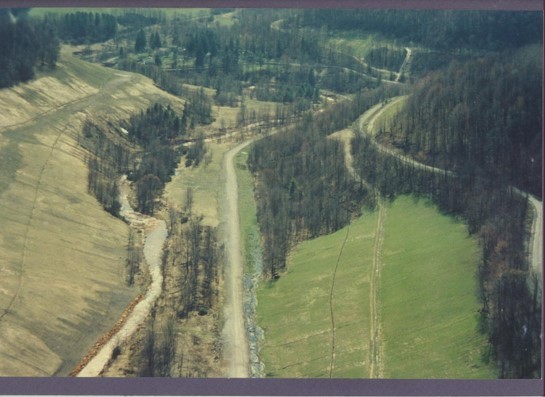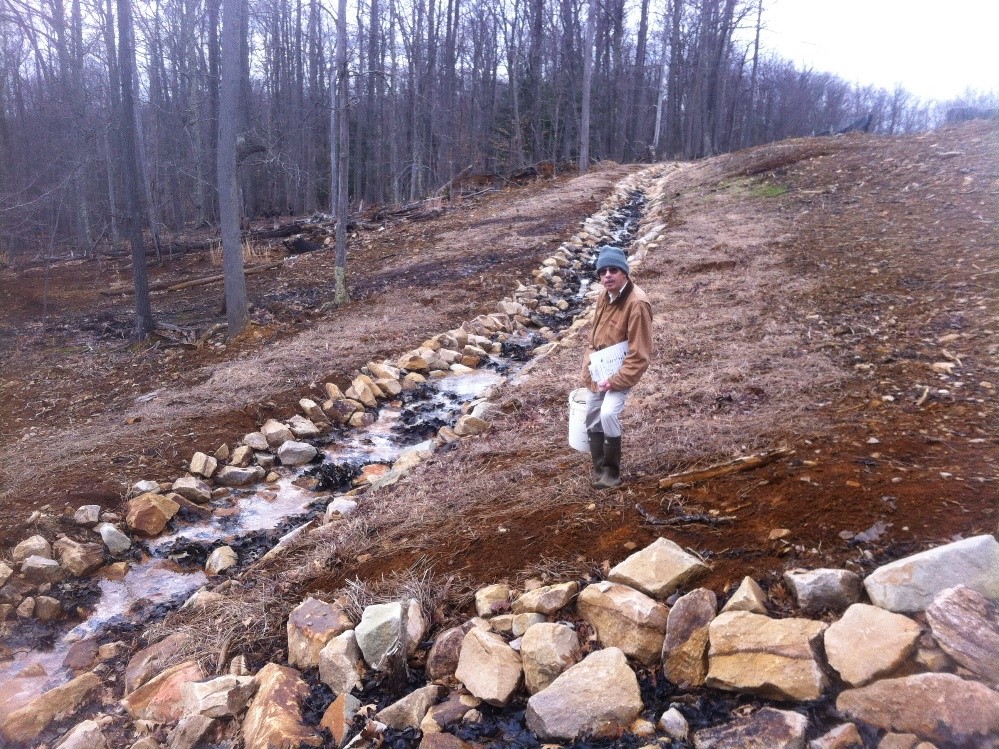Infrastructure Investment and Jobs Act, Mine Reclamation, and Watershed Groups
By Martin Christ
On November 15, 2021, President Biden signed the Infrastructure Investment and Jobs Act (IIJA) into law. Many people refer to it as the Bipartisan Infrastructure Law or the Bipartisan Infrastructure Framework. It is causing some interesting discussions, and not just about what to call it.
The Watershed Improvement Branch at WVDEP receives funds from the EPA Nonpoint Source Program and passes it along to “subgrantees” who can do good things with it. Many of those subgrantees are watershed associations. You can think of those subgrantees as machines that take in resources (donations, volunteer hours, and money) and spit out good work. The good work is the reduction of nonpoint source pollution in our streams and rivers.
Nonpoint Source funds, however, are not the only funds that are looking for machines. Abandoned Mine Land funds also flow into WVDEP and also make good work happen. In that case, the good work is the elimination of problems caused by mining before 1977. That can include water pollution, but it can also include hazards on the ground, such as sinkholes, highwalls, and open portals.
The part of WVDEP that handles those funds, the Office of Abandoned Mine Lands and Reclamation, is a bigger machine, uses more money, and finishes more projects than watershed groups do. We can compare the size of projects using prices.
The Office of Abandoned Mine Lands and Reclamation has the capacity to do some very large projects, such as the reclamation of mines on both sides of the North Fork Blackwater River near Douglas, WV.
A large but not unusually large watershed association project for AMD remediation might use $150,000 from the nonpoint source program and $100,000 from the Watershed Cooperative Agreement Program in the Office of Surface Mining Reclamation and Enforcement (OSMRE). A small watershed association might sweat for three years to get it done. OAMLR, on the other hand, uses a budget of approximately $20 million every year.
Former Buckhannon River Watershed Association leader Paul Richter visits the construction site of the Swamp Run #1 project near Alton, WV.
The IIJA is going to send approximately $140 million to West Virginia for eliminating mining problems every year. Which machine is big enough to handle those resources? Right now, none! That’s what many people are discussing.
What will happen next? First, OSMRE, a part of the United States Department of the Interior, has to write rules for how the money is spent. Then WVDEP and other local people will have to determine how to put those rules into action.
What should watershed associations do to prepare? They should do what they have always done, only better!
- Identify impaired streams.
- Identify the sources that pollute the streams.
- Measure the pollution loads, so that you know how many and which sources must be fixed to restore the stream.
- Keep in touch with your project landowners and make sure your partnerships with them are rock solid.
- Reach out to the community and find the hardest working volunteers to help you get work done.
- Be efficient and organized.
This is a lot to ask of volunteers. WVDEP and WVWN are constantly in awe of all you do and your commitment to clean water. Please let us know how we can help! Find your WVDEP Basin Coordinator.





